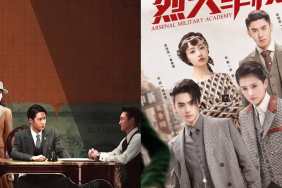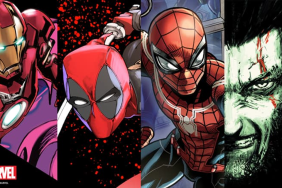Starring:
Tom Cruise as Nathan Algren
Ken Watanabe as Katsumoto
Koyuki as Taka
Billy Connolly as Zebulon Gant
Tony Goldwyn as Colonel Bagley
Masato Harada as Omura
Masashi Odate as Omura’s Companion
John Koyama as Omura’s Bodyguard
Timothy Spall as Simon Graham
Shichinosuke Nakamura as Emperor Meiji
Togo Igawa as General Hasegawa
Shin Koyamada as Nobutada
Hiroyuki Sanada as Ujio
Shun Sugata as Nakao
Sosuke Ikematsu as Higen
Aoi Minato as Magojiro
Seizo Fukumoto as Silent Samurai
Takashi Noguchi as Kyogen Player #2
Sven Toorvald as Omura’s Secretary
Scott Wilson as Ambassador Swanbeck
William Atherton as Winchester Rep
Special Features:
Theatrical Film With Commentary by director Edward Zwick
Deleted Scenes with commentary
History vs. Hollywood: The Last Samurai {History Channel Documentary)
Tom Cruise: A Warrior’s Journey
Edward Zwick: Director’s Video Journal
Making an Epic: A Conversation with Edward Zwick and Tom Cruise
A World of Detail: Production Design with Lilly Kilvert
Silk and Armor: Costume Design with Ngila Dickson
Imperial Army Basic Training
From Soldier to Samurai: The Weapons
Japan Premieres {Tokyo & Kyoto red carpet)
Theatrical Trailer
Other Info:
Widescreen
Dolby 5.1 Digital Surround Sound
French and Spanish Subtitles
French Language
Running Time: 154 minutes
Synopsis:
Nathan Algren is a washed up U.S. soldier and a veteran of the wars with the Indians. After having seen the horrors inflicted upon innocent Native Americans by his commanding officers, he has left the service and is now a drunkard haunted by nightmares. One day his former fellow officer Zebulon Gant comes by with an offer. The Japanese government is looking for someone to train their soldiers in the ways of Western warfare. They want Algren to lead the modernization of the army. Seeing nothing to lose, Algren agrees to go to Japan. The catch is that he must work with his former commanding officer Colonel Bagley.
When Algren arrives, he finds the Japanese soldiers completely untrained in using firearms. Despite a lack of time and training, he’s ordered to lead the troops into battle with a rebellious Samurai warrior by the name of Katsumoto. Katsumoto and his fellow Samurai warriors remain loyal to the Emperor, but they are violently opposed to the Westernization of the country. They have resorted to guerilla tactics to get their point across.
When Algren and Katsumoto face off for the first time, the Japanese soldiers are easily defeated. After a vicious last stand, Algren is also captured and taken back to the remote village of the Samurai. There he is stranded through the winter as his wounds heal. He begins to learn more about the Samurai and their simple, honorable way of life. He also begins to learn their unique form of combat. However, when he’s eventually free to leave, will he stand with or against the Samurai when the Emperor again sends his forces?
The Last Samurai is rated R for strong violence and battle sequences.
The Movie:
I’ve always been interested in Japanese history and the Samurai, so this film was right up my alley. The Last Samurai does a wonderful job of recreating this pivotal point in Japanese history and culture. The fine attention to detail is impressive and you quickly become immersed in this unique world. The plot is so wrapped in the unique environment that only after it was over did I realize how similar the movie was to Dances With Wolves. Both movies have burned out Civil War era soldiers. Both have men pulled into a strange society. Both come to respect this new culture and despise their native culture. The plots are almost identical, but they are both wrapped in such different packages that the similarities are not immediately apparent. If you liked Dances With Wolves, then chances are you’ll enjoy The Last Samurai.
The most memorable things about The Last Samurai are the battles. They are incredible. The opening fight where the Samurai are revealed is beautiful, scary, and haunting. It really sets the tone for everything to come and establishes in short order what the Samurai are about. However, that scene is upstaged halfway through the movie when a group of ninjas attack the Samurai village. If you ever wanted to see Samurai fight ninjas, this is one you’ll want to check out. It amazing to see what would otherwise be martial arts garbage presented in a historically accurate setting. It doesn’t come across as cheesy or out of place. Rather it is one of the most intense, emotional scenes in the movie. The final battle between the remaining Samurai and the modernized Japanese army is also quite impressive.
The initial thought of mega-star Tom Cruise in a Samurai movie seems ludicrous. He doesn’t seem to fit it at all. However, Cruise does a great job. He brings his character to life and you really believe his transition from burned out soldier to full fledged Samurai. Not only is his performance emotional but he handles the action very well. His sword fights are quite impressive. He is supported by a group of Japanese actors whom you’ve probably never heard of. Ken Watanabe plays the lead Samurai Katsumoto. He is excellent as a stern leader with a hidden softer side. His relationship with Cruise is entirely believable and he also handles the action well. Koyuki is also memorable as Taka, the widow of a Samurai warrior who Tom Cruise killed. As she is asked to take care of the wounded Cruise, you can tell underneath her polite, quiet exterior she’s thirsty for revenge. This inner conflict makes her one of the more compelling characters of the movie. Her eventual transition from hatred to love for Cruise is entirely believable (though a little hurried in the interest of movie running time). Billy Connolly rounds out the excellent supporting cast in a brief role as Zebulon Gant. He brings the right amount of humor in early on to balance out the otherwise dark tone of the film.
New Zealand substitutes for old Japan. Like in The Lord of the Rings, the settings are simply stunning and they should help boost tourism to the country. The music by Hans Zimmer (with Blake Neely and Geoff Zanelli) is memorable with a definite “Gladiator” feel to it.
I was a bit disappointed with the ending of the film. I didn’t think the story concluded in a way consistent with the rest of the movie. I can’t say too much without spoiling it, but suffice it to say they went with the Hollywood ending rather than the logical one. A concluding speech by Cruise’s character also came across as particularly cheesy.
I also have to wonder what the Japanese think about having an American being inserted by Hollywood into one of their most crucial periods in history. Having Cruise lead not only the Japanese army but the Samurai seems almost disrespectful. It’s like having Jabba the Hutt added into Star Wars A New Hope. He shouldn’t be there. Errr… wait a second.
The film also has some distinctly anti-Western undertones. As if the world didn’t have enough reasons to dislike the West, this offers a few more reasons. They come just short of saying out loud that the U.S. was responsible for the modernization and corruption of Japan, the shift in cultural mindset of the Japanese, and thus World War II. Whether or not this is true is a point for historians to debate, but I wonder how it will play out in front of American audiences.
Overall The Last Samurai is an epic film that is truly impressive. With romance, action, drama, and more, it has everything you could look for in a movie. It was a legitimate Oscar contender.
The Extras:
This 2 disc set comes with a number of DVD bonus features:
Theatrical Film With Commentary by director Edward Zwick Zwick delivers a good commentary that covers everything a viewer could possibly want to hear. He talks about experiences with the actors, filming techniques, locations, historical advisors, and the real world history. You can tell he’s very passionate about this film. While it’s a bit much to listen to at over 2 hours long, he has a few things to say that are worth checking out.
Deleted Scenes with commentary There are two deleted scenes included. The first shows Algren early in the film witnessing a confrontation between government officials and a Samurai. When harassed, the Samurai proceeds to decapitate one of the men. The scene is followed by a short “making of” feature showing how they did the decapitation effect. The second scene shows Algren and Katsumoto discussing the Civil War and matching wits. Both scenes are interesting and worth checking out.
History vs. Hollywood: The Last Samurai This History Channel Documentary discusses the real life history of Japan and the Samurai. Amid historical photos, they have interviews with historians, Cruise, and director Edward Zwick. Rather than pick apart where the movie was right and wrong (as the title might imply), they dance around the issue citing poetic license and mainly emphasize what it got right. Still, it is quite interesting.
Tom Cruise: A Warrior’s Journey This video shows how Cruise trained for the role and it features quite a bit of behind the scenes footage as cast and crew praise him. Cruise talks a bit about the character and what it was like working with his Japanese co-stars.
Edward Zwick: Director’s Video Journal This is about a half hour of behind the scenes footage from key scenes in the film. Zwick narrates the footage and discusses the locations in Japan that they shot at, trivia about the extras, and more. It’s actually a better option to listen to than the commentary, but it does run a little long.
Making an Epic: A Conversation with Edward Zwick and Tom Cruise Cruise and Zwick discuss how the movie was made, their motivations behind making it, how they approached making it, and their thoughts and feelings as it was filmed. When they’re not praising each other, it is an interesting look behind the scenes at the creative forces behind The Last Samurai.
A World of Detail: Production Design with Lilly Kilvert This short video shows the village set on the WB backlot and the New Zealand Samurai village. You get a sense of appreciation for their attention to detail and the fine work that went into the sets.
Silk and Armor: Costume Design with Ngila Dickson This other short feature discusses the costumes and all the research that went into making them. Again, good stuff.
Imperial Army Basic Training This video shows how all the Japanese extras were trained in military procedures for the film. You see them learn to march, shoot, and dress in their elaborate costumes. It makes you wonder how anyone could have the time off from a real job to play soldier for so long!
From Soldier to Samurai: The Weapons This short extra discusses the swords, guns, and cannons used in the movie. There’s interesting discussion on the making of the Samurai swords and the traditions behind them. I was also amazed to see that they built real working bronze cannons for this film. It makes you appreciate how many movie tickets had to be sold to pay for this movie.
Japan Premieres {Tokyo & Kyoto red carpet) This video shows the opening of the film in Japan and the red carpet interviews with all of the actors. Most of the interviews are in Japanese and are your typical light, quick interview questions. They also represent some of the few interviews with the Japanese cast on the DVD.
The Bottom Line:
This is an excellent film well worth checking out if not adding to your collection.










